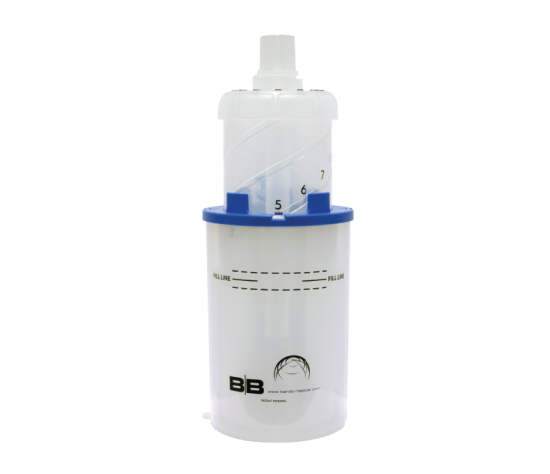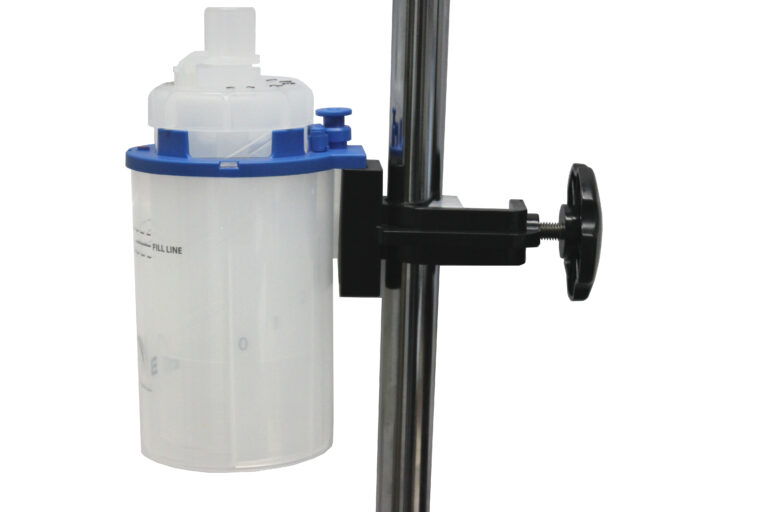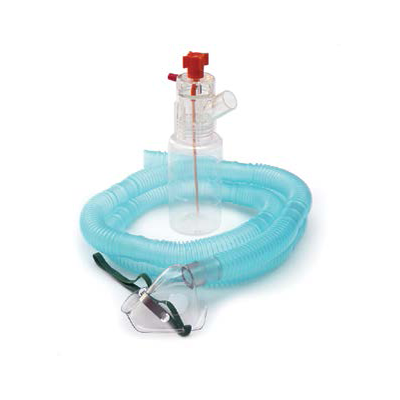Managing respiratory distress, whether in a premature infant or an adult in crisis, requires a careful balance of support, safety, and timing. Bubble CPAP has emerged as a frontline treatment option because it provides continuous, non-invasive pressure that aids patients in breathing more effectively, reducing the need for mechanical ventilation. However, the effectiveness of this approach largely depends on the specific system chosen, and this is where significant clinical differences can arise.
At B&B Medical Technologies, we’ve worked hand-in-hand with respiratory teams for decades to develop Bubble CPAP solutions that make care safer, smoother, and easier to manage. Here’s how we help you choose the right system, and why our designs make a difference across age groups and acuity levels.
What Is Bubble CPAP and How Does It Work?
Bubble CPAP (Continuous Positive Airway Pressure) is a respiratory support method that delivers constant pressure to keep airways open. In contrast to traditional CPAP machines that rely on complex mechanical systems, Bubble CPAP uses an underwater expiratory limb to create oscillations. These tiny pressure variations help recruit alveoli, improve gas exchange, and reduce the risk of lung injury.
What makes this method stand out is its ability to blend effectiveness with simplicity. Without relying on bulky machinery, Bubble CPAP creates a natural form of oscillation that mimics some of the lung’s own mechanics. The rhythmic bubbling signifies stability, consistent pressure, and careful monitoring. This design is crucial when seconds count and quick, reliable decisions are needed.
Used primarily in neonates but increasingly adapted for adult care, this approach is valued for its:
● Simplicity and cost-effectiveness
● Lung-protective pressure delivery
● Compatibility with bedside use and non-invasive setups
Key Benefits of Bubble CPAP in Neonatal Care
For neonates, especially preterm infants with underdeveloped lungs, Bubble CPAP offers early, gentle support that minimizes the need for mechanical ventilation. Clinically proven benefits include:
● Reduced lung trauma: The constant, low-pressure system minimizes barotrauma.
● Improved oxygenation: Bubble-induced oscillations enhance alveolar recruitment.
● Better tolerance: Infants typically tolerate the system better than traditional masks or invasive tubes.
● Lower rates of bronchopulmonary dysplasia (BPD): Studies show lower BPD incidence with early Bubble CPAP
We’ve optimized our neonatal system with:
● nCPAP Cap: Designed for stable nasal prong positioning
● NEO2-Safe™ manifold: Helps regulate pressure delivery
● B&B Bubbler: Creates consistent bubble flow and effective oscillation
Expanding Use: Bubble CPAP for Adult Respiratory Support
Though it originated in neonatal settings, Bubble CPAP is increasingly being explored for adult patients experiencing mild to moderate respiratory distress. This includes:
● COVID-19 or viral pneumonia patients needing oxygen support
● COPD patients requiring non-invasive ventilation
● Emergency transport scenarios without access to mechanical ventilators
Our CPAP delivery systems scale to adult needs by:
● Offering adjustable pressure ranges
● Supporting dual-limb configurations
● Integrating with standard hospital oxygen flow meters
We’ve designed components like the HOPE nebulizer and pressure relief manifolds to work alongside CPAP delivery, ensuring adults receive humidified, therapeutic airflow that’s both safe and effective.
What to Look for in a Reliable Bubble CPAP System
Different systems vary significantly in quality, safety, and ease of use. When outfitting a neonatal intensive care unit or a field hospital, consider these important factors:
1. Pressure Stability & Oscillation Quality
● Look for consistent bubbling action to ensure reliable CPAP delivery.
● Avoid systems with weak or irregular bubble flow, as these may fail to provide therapeutic benefit.
2. Compatibility with Monitoring Tools
● A good system integrates with pressure manometers, oxygen sensors, and ETCO2 monitors.
● Our setups are designed to plug into existing hospital infrastructure for ease and accuracy.
3. Infection Control & Disposability
● In neonatal and ICU settings, cross-contamination is a serious risk.
● We offer both reusable and single-patient disposable options to match your infection control protocols.
4. Patient Comfort & Secure Fit
● Nasal prong or mask interfaces must stay in place without causing skin damage.
● Our nCPAP Cap is made with soft, adjustable materials that reduce pressure injuries while maintaining a snug fit.
5. Ease of Assembly & Training
● Complicated systems increase error risk and time to treatment.
● Our bubble CPAP kits come with clear instructions and modular components for fast setup and clinician confidence.
What Makes Our Bubble CPAP Systems Clinically Reliable
We design our Bubble CPAP systems to deliver consistent performance, adapt to different patient populations, and simplify care delivery:
● Clinical adaptability: Neonatal to adult applications
● Reliable delivery: Consistent bubbling action, no flow dropout
● Streamlined design: Easy setup in transport or bedside settings
● Regulatory assurance: Our devices are FDA-cleared and ISO 13485 certified
We’ve seen firsthand how early intervention with the right equipment can change outcomes. Every component we design is rooted in clinical evidence and frontline feedback.
Choosing for Safety, Simplicity, and Patient Outcomes
Effective respiratory care starts with tools that not only meet standards but also respond to immediate needs. Your equipment should perform well under pressure, integrate smoothly into fast-paced environments, and ensure patient safety without slowing you down. Clinicians trust our Bubble CPAP systems, whether in NICUs or transport teams, for their reliability and effectiveness because they:
● Evidence-based: Developed through decades of real-world use
● Adaptable: Compatible with various hospital settings
● Safe: Designed with infection control and patient comfort in mind
Because the right system gives every patient the best possible chance at a safe, stable recovery.
Frequently Asked Questions
What is the ideal pressure range for neonatal Bubble CPAP?
Most neonatal systems are set between 4–8 cm H2O. Our adjustable manifolds allow precise control within this therapeutic window.
Can Bubble CPAP be used for adult patients with COVID-19?
Yes, under clinical guidance. Bubble CPAP can support oxygenation in adults with mild to moderate distress, particularly in low-resource or high-volume situations.
What’s the difference between Bubble CPAP and ventilators?
Ventilators use mechanical pressure to force air into the lungs. Bubble CPAP supports spontaneous breathing by maintaining continuous airway pressure non-invasively.
Is your Bubble CPAP system easy to set up for new staff?
Yes. Our modular design and clear instructions reduce training time and allow quick deployment, even in emergency or transport scenarios.
How does B&B’s nCPAP Cap help with patient comfort?
It distributes pressure evenly and keeps nasal prongs securely in place, reducing the risk of skin breakdown in neonates.
Ready to equip your team with safe, effective respiratory care tools?
Contact us today to learn more about our full line of Bubble CPAP solutions and how they can improve outcomes for your patients.


